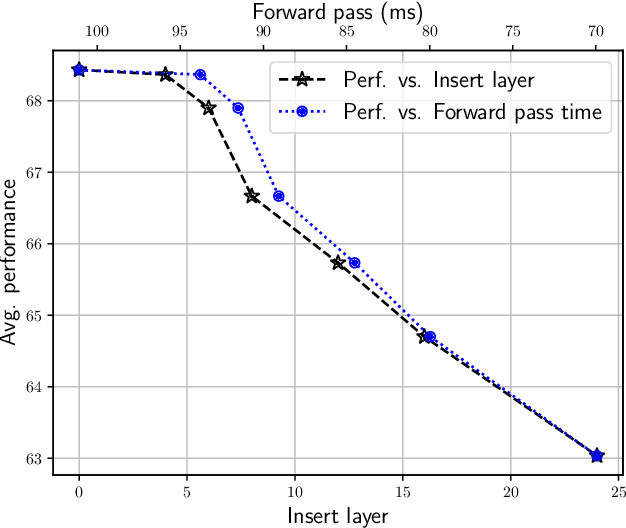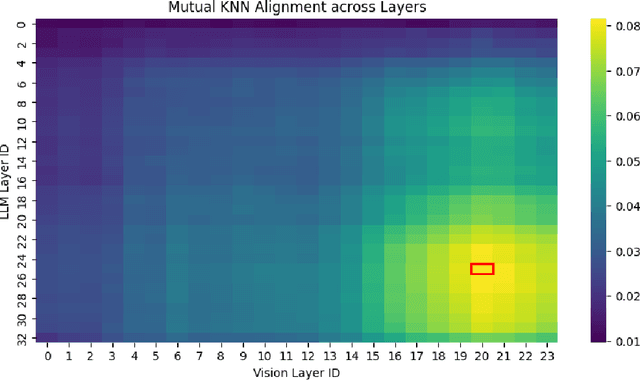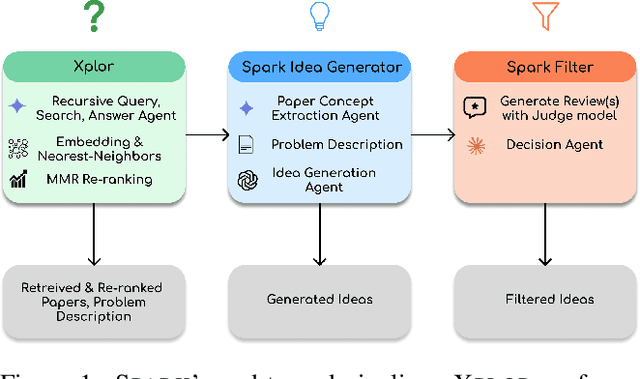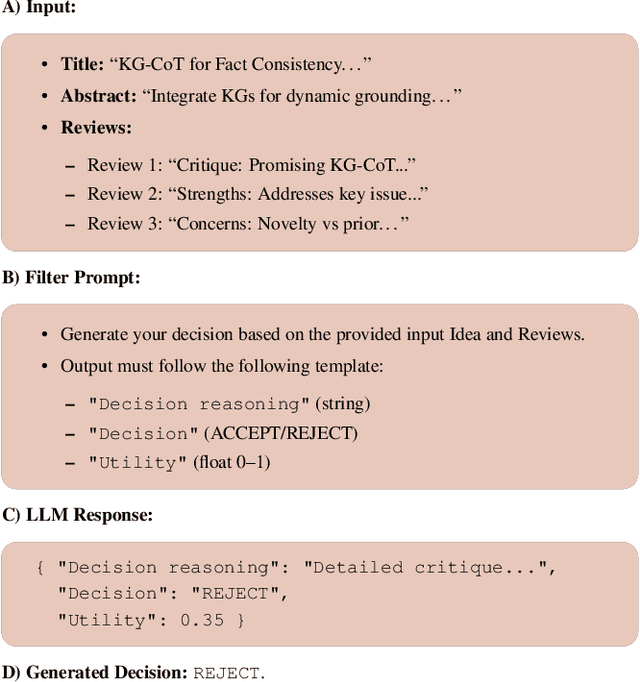Lav R. Varshney
University of Illinois at Urbana-Champaign
Nonlinear Federated System Identification
Aug 20, 2025Abstract:We consider federated learning of linearly-parameterized nonlinear systems. We establish theoretical guarantees on the effectiveness of federated nonlinear system identification compared to centralized approaches, demonstrating that the convergence rate improves as the number of clients increases. Although the convergence rates in the linear and nonlinear cases differ only by a constant, this constant depends on the feature map $\phi$, which can be carefully chosen in the nonlinear setting to increase excitation and improve performance. We experimentally validate our theory in physical settings where client devices are driven by i.i.d. control inputs and control policies exhibiting i.i.d. random perturbations, ensuring non-active exploration. Experiments use trajectories from nonlinear dynamical systems characterized by real-analytic feature functions, including polynomial and trigonometric components, representative of physical systems including pendulum and quadrotor dynamics. We analyze the convergence behavior of the proposed method under varying noise levels and data distributions. Results show that federated learning consistently improves convergence of any individual client as the number of participating clients increases.
Concealment of Intent: A Game-Theoretic Analysis
May 27, 2025Abstract:As large language models (LLMs) grow more capable, concerns about their safe deployment have also grown. Although alignment mechanisms have been introduced to deter misuse, they remain vulnerable to carefully designed adversarial prompts. In this work, we present a scalable attack strategy: intent-hiding adversarial prompting, which conceals malicious intent through the composition of skills. We develop a game-theoretic framework to model the interaction between such attacks and defense systems that apply both prompt and response filtering. Our analysis identifies equilibrium points and reveals structural advantages for the attacker. To counter these threats, we propose and analyze a defense mechanism tailored to intent-hiding attacks. Empirically, we validate the attack's effectiveness on multiple real-world LLMs across a range of malicious behaviors, demonstrating clear advantages over existing adversarial prompting techniques.
Platonic Grounding for Efficient Multimodal Language Models
Apr 27, 2025



Abstract:The hyperscaling of data and parameter count in Transformer-based models is yielding diminishing performance improvement, especially when weighed against training costs. Such plateauing indicates the importance of methods for more efficient finetuning and inference, while retaining similar performance. This is especially relevant for multimodal learning paradigms, where inference costs of processing multimodal tokens can determine the model's practical viability. At the same time, research on representations and mechanistic interpretability has improved our understanding of the inner workings of Transformer-based models; one such line of work reveals an implicit alignment in the deeper layers of pretrained models, across modalities. Taking inspiration from this, we motivate and propose a simple modification to existing multimodal frameworks that rely on aligning pretrained models. We demonstrate that our approach maintains and, in some cases, even improves performance of baseline methods while achieving significant gains in both training and inference-time compute. Our work also has implications for combining pretrained models into larger systems efficiently.
Transformational Creativity in Science: A Graphical Theory
Apr 25, 2025

Abstract:Creative processes are typically divided into three types: combinatorial, exploratory, and transformational. Here, we provide a graphical theory of transformational scientific creativity, synthesizing Boden's insight that transformational creativity arises from changes in the "enabling constraints" of a conceptual space and Kuhn's structure of scientific revolutions as resulting from paradigm shifts. We prove that modifications made to axioms of our graphical model have the most transformative potential and then illustrate how several historical instances of transformational creativity can be captured by our framework.
Spark: A System for Scientifically Creative Idea Generation
Apr 25, 2025


Abstract:Recently, large language models (LLMs) have shown promising abilities to generate novel research ideas in science, a direction which coincides with many foundational principles in computational creativity (CC). In light of these developments, we present an idea generation system named Spark that couples retrieval-augmented idea generation using LLMs with a reviewer model named Judge trained on 600K scientific reviews from OpenReview. Our work is both a system demonstration and intended to inspire other CC researchers to explore grounding the generation and evaluation of scientific ideas within foundational CC principles. To this end, we release the annotated dataset used to train Judge, inviting other researchers to explore the use of LLMs for idea generation and creative evaluations.
Fed-SB: A Silver Bullet for Extreme Communication Efficiency and Performance in (Private) Federated LoRA Fine-Tuning
Feb 21, 2025Abstract:Low-Rank Adaptation (LoRA) has become ubiquitous for efficiently fine-tuning foundation models. However, federated fine-tuning using LoRA is challenging due to suboptimal updates arising from traditional federated averaging of individual adapters. Existing solutions either incur prohibitively high communication cost that scales linearly with the number of clients or suffer from performance degradation due to limited expressivity. We introduce Federated Silver Bullet (Fed-SB), a novel approach for federated fine-tuning of LLMs using LoRA-SB, a recently proposed low-rank adaptation method. LoRA-SB optimally aligns the optimization trajectory with the ideal low-rank full fine-tuning projection by learning a small square matrix (R) between adapters B and A, keeping other components fixed. Direct averaging of R guarantees exact updates, substantially reducing communication cost, which remains independent of the number of clients, and enables scalability. Fed-SB achieves state-of-the-art performance across commonsense reasoning, arithmetic reasoning, and language inference tasks while reducing communication costs by up to 230x. In private settings, Fed-SB further improves performance by (1) reducing trainable parameters, thereby lowering the noise required for differential privacy and (2) avoiding noise amplification introduced by other methods. Overall, Fed-SB establishes a new Pareto frontier in the tradeoff between communication and performance, offering an efficient and scalable solution for both private and non-private federated fine-tuning. Our code is publicly available at https://github.com/CERT-Lab/fed-sb.
ITBench: Evaluating AI Agents across Diverse Real-World IT Automation Tasks
Feb 07, 2025



Abstract:Realizing the vision of using AI agents to automate critical IT tasks depends on the ability to measure and understand effectiveness of proposed solutions. We introduce ITBench, a framework that offers a systematic methodology for benchmarking AI agents to address real-world IT automation tasks. Our initial release targets three key areas: Site Reliability Engineering (SRE), Compliance and Security Operations (CISO), and Financial Operations (FinOps). The design enables AI researchers to understand the challenges and opportunities of AI agents for IT automation with push-button workflows and interpretable metrics. ITBench includes an initial set of 94 real-world scenarios, which can be easily extended by community contributions. Our results show that agents powered by state-of-the-art models resolve only 13.8% of SRE scenarios, 25.2% of CISO scenarios, and 0% of FinOps scenarios. We expect ITBench to be a key enabler of AI-driven IT automation that is correct, safe, and fast.
Online Reinforcement Learning with Passive Memory
Oct 18, 2024Abstract:This paper considers an online reinforcement learning algorithm that leverages pre-collected data (passive memory) from the environment for online interaction. We show that using passive memory improves performance and further provide theoretical guarantees for regret that turns out to be near-minimax optimal. Results show that the quality of passive memory determines sub-optimality of the incurred regret. The proposed approach and results hold in both continuous and discrete state-action spaces.
Compute-Update Federated Learning: A Lattice Coding Approach
Sep 10, 2024Abstract:This paper introduces a federated learning framework that enables over-the-air computation via digital communications, using a new joint source-channel coding scheme. Without relying on channel state information at devices, this scheme employs lattice codes to both quantize model parameters and exploit interference from the devices. We propose a novel receiver structure at the server, designed to reliably decode an integer combination of the quantized model parameters as a lattice point for the purpose of aggregation. We present a mathematical approach to derive a convergence bound for the proposed scheme and offer design remarks. In this context, we suggest an aggregation metric and a corresponding algorithm to determine effective integer coefficients for the aggregation in each communication round. Our results illustrate that, regardless of channel dynamics and data heterogeneity, our scheme consistently delivers superior learning accuracy across various parameters and markedly surpasses other over-the-air methodologies.
SwitchCIT: Switching for Continual Instruction Tuning of Large Language Models
Jul 16, 2024Abstract:Large language models (LLMs) have exhibited impressive capabilities in various domains, particularly in general language understanding. However these models, trained on massive text data, may not be finely optimized for specific tasks triggered by instructions. Continual instruction tuning is crucial to adapt LLMs to evolving tasks and domains, ensuring their effectiveness and relevance across a wide range of applications. In the context of continual instruction tuning, where models are sequentially trained on different tasks, catastrophic forgetting can occur, leading to performance degradation on previously learned tasks. This work addresses the catastrophic forgetting in continual instruction learning for LLMs through a switching mechanism for routing computations to parameter-efficient tuned models. We demonstrate the effectiveness of our method through experiments on continual instruction tuning of different natural language generation tasks.
 Add to Chrome
Add to Chrome Add to Firefox
Add to Firefox Add to Edge
Add to Edge